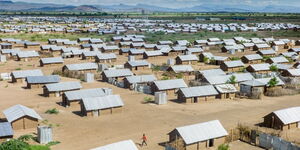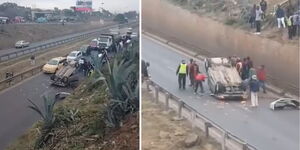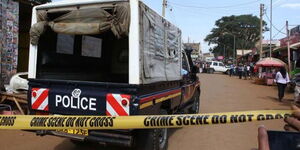In February 2020, Health CS Mutahi Kagwe embarked on the preparation of a well-detailed plan in anticipation of a possible Covid-19 outbreak in the country
The 34-page document titled National Novel Coronavirus Contingency (Readiness and Early Response) Plan was necessitated by the worrying trend of the Coronavirus outbreak in Wuhan City, Hubei Province, the Peoples' Republic of China.
CS Kagwe identified 14 counties that faced the greatest risk of infection if the virus was imported into the country.
The counties were: Nairobi, Mombasa, Kisumu, Kiambu, Uasin Gishu, Kajiado, Machakos, Kakamega, Nakuru, Garissa, Wajir, Busia, Kilifi and Migori.
He went further to explain that the 14 counties were highlighted as they either have international airports, seaports, have major border crossings or have a high Chinese population.
In line with the findings and patterns observed in China, the CS's document mapped out 4 possible scenarios: Scenario One, Best Case Scenario, Most Likely Scenario and Worst Case Scenario
Scenario One
Kenya is well past these phase as it is characterised by an outbreak in a country with close linkages with Kenya with sustained human to human transmission but no case reported in Kenya.
Best Case Scenario
With 582 confirmed Covid-19 positive cases and 26 fatalities in Kenya as at May 6, Kagwe's best-case scenario proved to be the most optimistic.
It was characterised by the first suspected Covid-19 positive being nabbed at the point of entry and isolated before he/she was able to interact with the community.
"The suspected case is handed over to the Kenya Port Health authorities and transferred to an observation centre and later a treatment centre. There is no local transmission. There may be approximately 450 contacts (passengers on the plane and airport staff) that may be followed for fourteen days," reads an excerpt of the document.
Most Likely Scenario
This projection was characterised by an asymptomatic case arriving in the country through one of the points of entry undetected.
The case interacts with community members and frontline health workers before a diagnosis is made.
Over 1,000 primary contacts are identified and isolated.
50% (500) develop the disease within fourteen days, 20% (100) progress to severe disease including pneumonia, respiratory failure and 5% (25) of those who developed the disease die and are safely buried in the community.
Under this scenario, there is mass panic in the community, and several health workers would threaten to abandon their posts.
Worst Case Scenario
Based on the current status within the country, the nation could very well be tittering on, if not already experiencing the worst possible projection based on Health CS Kagwe's emergency response plan.
Under this bracket, "Several close contacts begin to get sick including health workers. Some deaths are reported including health workers.
"There is a high person to person transmission in several communities in different counties. The system is overwhelmed," the document reads in part.
In response to the worst possible scenario, the Health CS went on to recommend the declaration of a national disaster.
"When there is evidence of sustained human to human transmission in Kenya, the government will declare a national disaster. A wider government sector approach including the UN humanitarian cluster will be activated," reads a section of the grand contingency plan.
"When a national disaster is declared the Office of the President will oversee the coordination of response," it further reads.
CS Kagwe's plan would be financed through a combination of public and private funds to ensure financial viability, sustainability, and equity in terms of access, he detailed.
"When an emergency or disaster is declared, Government will call upon the United Nations and bilateral development and humanitarian partners for their support. These include UN OCHA, UNICEF, WHO, World Bank, DFID and others," he detailed in the document.












